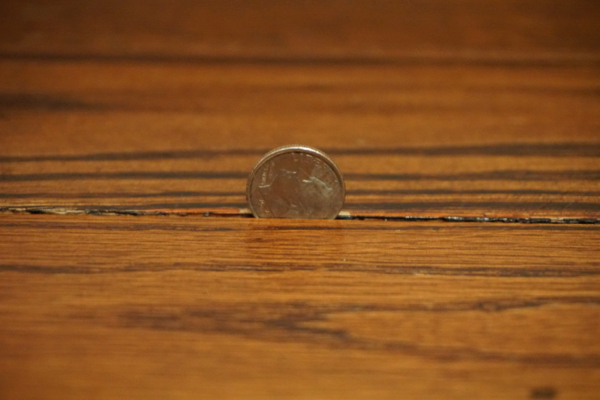It is important to remember that wood, no matter its species or its hardness rating, is an organic product and made of fibers that absorb nutrients and water. The fibers within wood are constantly changing in tension, flexibility, and solidity.
The structure of the wood allows the tree to extend itself into the atmosphere so it can gain more nutrients through the leaf system. The trunk of a tree regulates the give and take of these interchanges. Because of this ongoing organic process of growth, trees and therefore wood floors are a living, breathing entity. The slats of wood in your floor are expanding and contracting at the microscopic level, which is almost imperceptible.
Atmospheric conditions within a house can be affected by multiple variations such as the outdoor temperature, number of individuals living in the home, relative tightness of the house, and especially the efficiency of the HVAC system which influences the indoor environment. Typically, as winter approaches and thanks to the warm air produced by the heating system, the wood in your home will begin to lose moisture, start to contract, and consequently, gaps can appear. In certain regions of the world where the atmosphere is normally dry, gapping in hardwood floors may become very common.
Preparation of Hardwoods
After a slat of hardwood has been cut to accurate dimensions, the preparation of its surface begins. The finish of a hardwood not only serves to enhance its appearance but also protects the wood from future possible damage.
Since wood is a natural substance, its rings, lines, patterns, and distinct markings altogether contributed to its original appearance. The finish of hardwoods will bring out these features and make them aesthetically pleasing.
Hardwoods may be finished with colorants, dyes, stains, glazes, wood fillers, sealers, toners, primers, and shade coats. All these finishes will produce a different appearance in the wood and emphasize the hardwoods natural components.
In terms of its relationship to possible gapping, a hardwood finish will regulate the amount of moisture being taken in by the wood and the amount being expired into the air of your home. Therefore, to prevent gapping, it is vital that the finish was completed with skill and applied with efficiency.
Acclimating a Hardwood
A key component of installing a hardwood in your home is allowing the humidity and temperature of the wood to match the ambient humidity and temperature of your house. Should you fail to achieve this equilibrium between the wood and the atmosphere in your home, you may experience some problems after installation. If the wood you are installing has a higher moisture content than the sub-floor, it may contract after installation and cause shrinking and gapping. If the wood is dryer than the atmosphere of your home, then it may increase in size causing buckling and pressure against the outside border of the installation area.
Follow these steps in acclimating your hardwood flooring:
– Store the hardwood in the same room and on the same floor as the installation location.
– Operate your HVAC system at temperatures consistent with your daily routine.
– To speed up the process, stacking in a log cabin formation is recommended to allow ample airflow
Acclimating durations may change based on local weather conditions, the season of the year, and the tightness of your home. However, a good rule of thumb is to acclimate the hardwood for at least 7-10 days before installation.
In-Home Humidity Factors
The humidity in your home is the primary factor in the expansion and contraction of the hardwood you are installing. Therefore, keeping this factor constant will decrease the chances of issues arising during and after the installation.
Follow these guidelines in creating a correct atmosphere for the installation and life of your hardwood floor:
- Reduce ventilation. When air is brought from the outside of the home through ventilation channels, the air is then heated and consequently loses its relative humidity. Essentially, relative humidity drops in proportion to the amount of constant ventilation in the home. This calls for the weatherization of the home, sealing cracks, sealing old windows, etc.
- Add Moisture. Moisture is added to indoor environments from normal household activities and use. However, it is recommended that the relative humidity of your home be maintained between 35-55%. Where conditions require it, a humidifier is usually the solution. Generally speaking, a residential humidifying system will produce enough moisture to keep the relative humidity (RH) within acceptable ranges.
Considering all these above-mentioned factors will make the installation go smoothly, decrease the possible expanding or contracting of wood fibers after installation, and allow your hardwood flooring to last for the life of your home.

